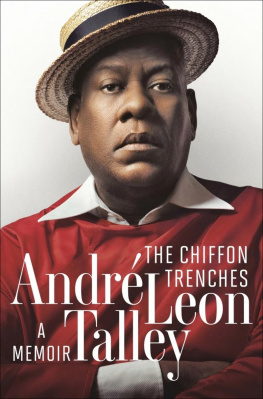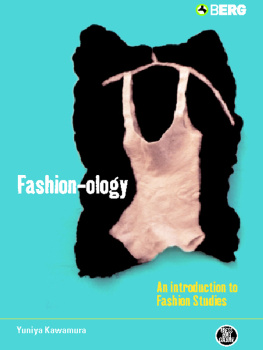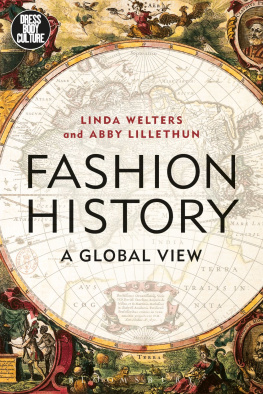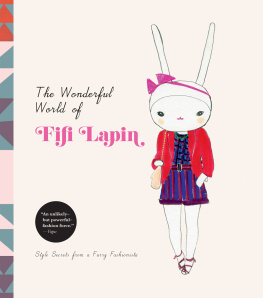NEW
YORK
FASHION
WEEK
THE DESIGNERS, THE MODELS,
THE FASHIONS OF THE BRYANT PARK ERA
EILA MELL
Photography by Randy Brooke and Roxanne Lowit

RUNNING PRESS
PHILADELPHIA LONDON
2011 by Eila Mell
Published by Running Press,
A Member of the Perseus Books Group
All rights reserved under the Pan-American and International Copyright Conventions
This book may not be reproduced in whole or in part, in any form or by any means, electronic or mechanical, including photocopying, recording, or by any information storage and retrieval system now known or hereafter invented, without written permission from the publisher.
Books published by Running Press are available at special discounts for bulk purchases in the United States by corporations, institutions, and other organizations. For more information, please contact the Special Markets Department at the Perseus Books Group, 2300 Chestnut Street, Suite 200, Philadelphia, PA 19103, or call (800) 810-4145, ext. 5000, or e-mail special.markets@perseusbooks.com.
ISBN 978-0-7624-4355-0
Library of Congress Control Number: 2011920103
E-book ISBN 978-0-7624-4355-0
9 8 7 6 5 4 3 2 1
Digit on the right indicates the number of this printing
Designed by Amanda Richmond
Edited by Cindy De La Hoz
Typography: Bodoni and Neutra
Running Press Book Publishers
2300 Chestnut Street
Philadelphia, PA 19103-4371
Visit us on the web!
www.runningpress.com
TABLE OF CONTENTS
Running in Heels
Back to Bryant Park
BY PHILLIP BLOCH
W HEN I WAS JUST A LITTLE FASHIONISTA in the hood I asked my mother, What will I be? Will I be handsome? Will I be rich? Heres what she said to me: Que sera sera, whatever will be will be. The futures not ours to see Que sera!
Even in my wildest dreams I couldnt have dreamt how amazing my fashionable life and career would be as I anxiously awaited each month to make my pilgrimage to the corner store for the arrival of the newest magazines. My local 7-11 store was a mecca for style, fashion, glamour, and all things that were beyond my sequestered little world in Long Island, New York. As a fashion over-achiever, I devoured anything that spoke to my passion for fashion and the fabulous life. I wanted to know what my favorite icons like Cher, Liz Taylor, Raquel Welch, Elizabeth Montgomery, and David Cassidy were doing or wearing. I had always imagined that my real mother was Sophia Loren and she had given me up for adoption at birth and thats how I ended up feeling so out of place with my uncool mom and so unstylish father in our humble home. There could be no other excuse for this intense longing I felt for places like New York City, where lights sparkle and dreams come true.
Though my parents loved me, understanding me wasnt easy, but they always encouraged me to be me. So much so, that as I was about to be expelled for the umpteenth time, my parents met with my teachers and begged for help to get me on a positive course. Soon after I saw the movie Mahogany and it became abundantly clear that the 9-to-5 and picket fence would never be enough for this future renaissance man. When I left the theater after the movie, I knew my calling would be to become a supermodel and fashion designer. I would be photographed at the most exotic places with the most fascinating and creative people. I would write and be written about just like my heroine, Diana Ross, in Mahogany! With concern and patience, the faculty at school and my folks created a curriculum, designed with my fashion acuity in mind (How chic! My classes were designed for mejust like couture!), with a minimum of math and science and a maximum of art and costume history, advertising and design, sketching and painting. Destiny had called and fashion and art were my tickets to a brighter, more luxurious future of dreams coming true!
When I received my advance copy (another perk of being fabulous!) of Eila Mells New York Fashion Week, I remembered those simple days in Long Island and realized that had I a guide like this, I may not have felt so out of place in my own place. This book is a treasure trove of all things fashion, jam-packed with tantalizing trivia and information about the early days of 7th on 6th Fashion Week at Bryant Park.
It reads like a fashion bible, with the gospel of trends and insider factoids that every fashionista, young and old, will take in with insatiable delight. This book will make even novices feel as if theyre sitting front row, center. Eila takes us through the ups and downs of hemlines and waistlines, the ins and outs of models careers, designers dreams, and New Yorks finest fashion houses. This all-encompassing read gives an inside look at all the glitz and glamour, blood, sweat, tears, and trends that make fashion shows and fashion such a magical and mystical ride.
Eila shares a seamlessly stitched together and in-depth retrospective of the thoughts and journeys of some of the most interesting and intriguing characters behind the seams, on the runways, and in front of the camera that make the fashion business a lifestyle beyond this little boys most magical dreams. Whether you were there or just wish you had been, New York Fashion Week is a romantic diary and intimate view of a fashionable world that I will always love to love.
I N 1943, AMERICAN FASHION publicist Eleanor Lambert organized an event called Press Week. Lambert wanted to call fashion editors attention to American designers, who had typically been overshadowed by their European counterparts. In the 1940s the shows were held at the Plaza and Pierre hotels in New York. Not long after, leading fashion publications Vogue and Harpers Bazaar began to incorporate the work of those American designers in their pages. Press Week was a success and became a tradition that continues to this day, although it is now called Fashion Week.
Over time, designers branched out from the usual Press Week locations, with many opting to present their collections in their own showrooms. It was also common to have fashion shows in nightclubs, restaurants, and other unique locations around the city. There could be fifty different shows in fifty different locations. While this worked for designers, it was inconvenient for editors and retailers as it drastically limited the number of shows one could attend. In addition, the unique venues selected by designers were often overcrowded and ill-equipped to accommodate a large audience. Attendees had to contend with situations such as power outages that left the crowd in the dark save for the faint illumination provided by cigarette lighters.
In 1991, Fern Mallis became the Executive Director of the Council of Fashion Designers of America, or CFDA (created by Eleanor Lambert). She was well aware that the situation with the shows had gotten out of hand. The final straw happened at a Michael Kors show: He had all the famous supermodels walking Cindy, Linda, Naomi, Claudia, said Mallis. It was in a loft space where he had a showroom, but it was on an empty floor. It was all concrete, and filled with cheap folding chairs. When they turned the music on, the bass was so loud that everything started to shake and the ceiling started to crumble. It brushed the shoulders of the models as they walked. True to form, they kept right on walking, but pieces of plaster and chunks of the ceiling landed on peoples laps.
Two of those hit with plaster were fashion journalists Suzy Menkes and Carrie Donovan. Suzy and Carrie were the poster girls for what happened, and wrote the next day, We live for fashion. We dont want to die for it. It became very clear to me then and there that my job description had just changed. It became a mission to organize and centralize, to do something safe. It was also my mission as director of CFDA to look at ways to elevate the American fashion industry and create a platform to promote and talk about what the designers do. Fashion Week became my platform.









